Presentation Objects of Interest: Difference between revisions
| (20 intermediate revisions by 3 users not shown) | |||
| Line 1: | Line 1: | ||
== Introduction == | == Introduction == | ||
[[File:Qr-code.png|center|frameless|600x600px]] | |||
=== Aims of this workshop === | === Aims of this workshop === | ||
# To give you an insight into how | # To give you an insight into how we are working with AI image creation | ||
# Have a dialogue on possible intersections with your research. | # Have a dialogue on possible intersections with your research. | ||
| Line 14: | Line 15: | ||
=== The background (Knowledge Servers) === | === The background (Knowledge Servers) === | ||
Within a larger project on digitization, democracy and citizenship ([https://shape.au.dk/en/ SHAPE]), we run a project that not only questions the role of Big Tech and platforms in the construction of knowledge, but also | Within a larger project on digitization, democracy and citizenship ([https://shape.au.dk/en/ SHAPE]), we run a project that not only questions the role of Big Tech and platforms in the construction of knowledge, but also how one might ‘delink’ from capital interests. | ||
We try to speak from the point of view of what you might call grassroots’ internet culture. A culture that had control of the tools and | We try to speak from the point of view of what you might call grassroots’ internet culture. A culture that had control of the tools, infrastructures and other means for its own existence – what the anthropologist Chris Kelty once called a ‘recursive publics’. | ||
History took us elsewhere. To 'client-server' relations (rather than peer-to-peer). | History took us elsewhere. To 'client-server' (platform) relations (rather than peer-to-peer). | ||
We speak of | We speak of technical infrastructures as a “epistemic infrastructures” (borrowing the term from [https://www.politybooks.com/bookdetail?book_slug=problem-spaces-how-and-why-methodology-matters--9781509507931 Celia Lury]): An infrastructure for what and how we know things – and not just for how we find information, or use it in other ways. | ||
[[File:Project image, knowledge infrastructures.png|thumb|Project image made with Stable Diffusion|left]] | [[File:Project image, knowledge infrastructures.png|thumb|Project image made with Stable Diffusion|left]] | ||
| Line 39: | Line 40: | ||
We share a history of being part of this culture ourselves | We share a history of being part of this culture ourselves | ||
Our 'amateurism' perhaps even | Our 'amateurism' perhaps even attempts to be ‘[https://parsejournal.com/article/undisciplining-who-we-bring-to-the-academic-table/#post-14685-endnote-18 undisciplined]’ – suspending disciplinary regimes (challenging the conditions under which knowledge occurs) | ||
We run and build services, "knowledge servers": | We run and build services, "knowledge servers": | ||
| Line 55: | Line 56: | ||
==== How we proceeded with generative AI ==== | ==== How we proceeded with generative AI ==== | ||
Our outset has been Stable Diffusion - a different visual culture than, say DALL-E. | |||
[[File:Map objects and planes.jpg|left|thumb|Sketchy map of our journey]] | A journey/mapping of, guided by Nicolas. | ||
<div style="clear:both;"> | |||
Mapping '[[Objects of interest and necessity|objects of interest/necessity]]' | |||
... Objects, not as manifestations of an ideal (an imaginary of autonomy), but the other way around: in our investigation we have found these objects and we try to draw a map of what autonomy looks like, rather than what it is. | |||
... That is the objects that create the imaginary | |||
... Not what autonomy is, but what it ''looks like'' under given conditions. | |||
Resulting in a workshop/exhibition/catalogue, September 2025 (final outcome)[[File:Map objects and planes.jpg|left|thumb|Sketchy map of our journey]] | |||
<div style="clear:both;"> | |||
There are things that show | |||
... ‘pixel space’: Images we create or images that are used to create and annotate data sets. | |||
There are things that don't show | |||
… A 'latent space' of models that generate outcomes | |||
… Software and people/communities that use and build on the software, to – for instance – support their own visual culture. | |||
… A level of organization of these people (for crowdsourcing p2p, using virtual tokens) | |||
( | … A material level of dependencies on units (such as the GPU, minerals, 'dead labour') | ||
</div> | |||
== AI Horde image generation with a communal infrastructure == | == AI Horde image generation with a communal infrastructure == | ||
=== | === Why? === | ||
* Monopoly and concentration of power in platform capitalism | * Monopoly and concentration of power in platform capitalism | ||
| Line 81: | Line 102: | ||
[[File:Stable Diffusion pipeline.png|none|thumb|Stable Diffusion pipeline, Severine Dusollier]] | [[File:Stable Diffusion pipeline.png|none|thumb|Stable Diffusion pipeline, Severine Dusollier]] | ||
[[File:Network of actants, Stable Diffusion.png|none|thumb|Network of actants, Stable Diffusion]] | [[File:Network of actants, Stable Diffusion.png|none|thumb|Network of actants, Stable Diffusion]] | ||
---- | |||
=== | === Decentralisation === | ||
=== | ==== CivitAI - a platform/repository ==== | ||
[https://civitai.com/ CivitAI] is a highly popular platform/repository for distributing AI models and images. In our taxonomy, it's what we refer to as a space between the private and the commons. It's private in the sense that it's focused on individuals sharing their work (e.g., the creation of new models), and commons in the sense that most models can be reused and remixed. It's a repository whose primary purpose is to share resources. | |||
[[File:Screenshot_20250530_115152.png|center|800x800px]] | |||
CivitAI has its own currency ("buzz"). It can be purchased or earned by being part of the community (posting, recommending, commenting, etc.). It can be used to leave tips or to order certain models. | |||
[[File:Screenshot_buzz_civitai.png|alt=Captura pantalla civitAI|center|800x800px]] | |||
It is largely a cultural hub, with its own economy, rules, and aesthetic preferences. | |||
While many, and the most popular models, recreate canon's of beauty and heteronormative standards, civitAI can be read as a '''hyper-specialisation''' space beyond big tech. This is where the '''"amateur modeler"''' can share their work. | |||
==== AI Horde - a network ==== | |||
AI Horde is a distributed computing cluster system. Using open source and crowdfunding, it allows users to borrow and lend other computers with graphics cards to use generative AI models. | |||
The system works by creating a directory of "workers" who are part of this network and distributing calls among themselves. In this sense, it is partially decentralised. | |||
[[File:Photo_2025-06-12_12-45-44.png|alt=AI horde diagram|center|frameless|600x600px]] | |||
As a worker, you can generate "kudos," the exchange currency with which you can also generate images of other workers (more kudos = better and faster models). | |||
=== Artbot | ==== Artbot - an interface ==== | ||
There are many interfaces for this "decentralised" network of "workers" (since the AI horde software/network is accessible through APIs, access can take many forms) | |||
One is a web-based interface: [https://tinybots.net/artbot/create artbot] | |||
Not only is there a complex system behind this interface, like with most generative AI interfaces (computational models based on large, obscure databases), but there is also a somewhat invisible intersection between the technical, the cultural, and the artistic (computational, computer science, '''the amateur modeler''', the visual artist, and the average user). | |||
Artbot not a plug-and-play interface either. While it is a suitable version in which programming knowledge is not required (as in older versions), it is not a blank, tame interface (think of Apple or chatGPT) | |||
'''If you want to use the GPU in the room, click (as per the image below), and search for the worker called "xpablov117"''' | |||
[[File: | [[File:Screenshot 20250530 142347.png|frame|none]] | ||
If you choose to use "our" worker, you will be limited to the following models (no LORAs, in_painting or image to image options): | |||
* stable_diffusion | |||
* Deliberate | |||
* ICBINP - I Can't Believe It's Not Photography | |||
* AbsoluteReality | |||
[[File:Screenshot 20250612 133059.png|alt=artbot model option|frameless|600x600px]] | |||
(here is a list of all the models available in the network at this point: https://tinybots.net/artbot/info/models | |||
About the NSFW issue within AI horde: | |||
* https://www.patreon.com/posts/nsfw-question-72771484 | |||
* https://www.patreon.com/posts/blacklist-72890784 | |||
* https://dbzer0.com/blog/ai-powered-anti-csam-filter-for-stable-diffusion/ | |||
=== | ==== Configuring AI horde ==== | ||
(if we have time, we can talk/show the file configuration for AI horde) | |||
[[File:Screenshot_20250523_122938.png|frameless|600x600px]] | |||
[[File:Screenshot_20250523_122806.png|200x200px|Installing AI horde|alt=Installing AI horde|thumb]] | |||
[[File:Screenshot_20250523_130334.png|thumb|200x200px|Running AI horde]] | |||
=== Dialogue === | |||
❧ What does it mean to make images in these ways? | |||
❧ How does governance function in these projects? | |||
❧ What is the relationship between the sharing ethos of these projects and their value generation? | |||
❧ What forms do the economy, labor, and bodies take? | |||
=== | === Resources === | ||
Startups funded 2013-2023: | Startups funded 2013-2023: | ||
* https://www.visualcapitalist.com/mapped-the-number-of-ai-startups-by-country/ | * https://www.visualcapitalist.com/mapped-the-number-of-ai-startups-by-country/ | ||
Critical perspective: | Critical perspective: | ||
* [http://localhost:8000/draft-presentation-002.pdf Generative AI ecosystem by Taller Estampa] | * [http://localhost:8000/draft-presentation-002.pdf Generative AI ecosystem by Taller Estampa] | ||
AI | AI and materiality | ||
* Big data, and only getting bigger https://arstechnica.com/information-technology/2025/05/where-hyperscale-hardware-goes-to-retire-ars-visits-a-very-big-itad-site | * Big data, and only getting bigger https://arstechnica.com/information-technology/2025/05/where-hyperscale-hardware-goes-to-retire-ars-visits-a-very-big-itad-site | ||
Latest revision as of 10:33, 13 June 2025
Introduction

Aims of this workshop
- To give you an insight into how we are working with AI image creation
- Have a dialogue on possible intersections with your research.
Agenda
- Background (Chr.)
- AI image generation: techniques and infrastructures - evading the conventional platforms and capital interests (Nicolas & Pablo)
- Conversation
The background (Knowledge Servers)
Within a larger project on digitization, democracy and citizenship (SHAPE), we run a project that not only questions the role of Big Tech and platforms in the construction of knowledge, but also how one might ‘delink’ from capital interests.
We try to speak from the point of view of what you might call grassroots’ internet culture. A culture that had control of the tools, infrastructures and other means for its own existence – what the anthropologist Chris Kelty once called a ‘recursive publics’.
History took us elsewhere. To 'client-server' (platform) relations (rather than peer-to-peer).
We speak of technical infrastructures as a “epistemic infrastructures” (borrowing the term from Celia Lury): An infrastructure for what and how we know things – and not just for how we find information, or use it in other ways.

Our questions
How does grassroots digital culture respond to this development? OR What does technological autonomy look like today?
… What are the strategies for culturally, democratically and environmentally sustainable knowledge infrastructures?
… What are the tensions within technologies?
… How do you provide alterantives/other services and infrastructures for communities?
Our methods
We collaborate with grassroots groups (such as collectives that run such services)
We share a history of being part of this culture ourselves
Our 'amateurism' perhaps even attempts to be ‘undisciplined’ – suspending disciplinary regimes (challenging the conditions under which knowledge occurs)
We run and build services, "knowledge servers":
… a server (within the university ecosystem)
… a library
… a wiki
… an etherpad
… a git repository
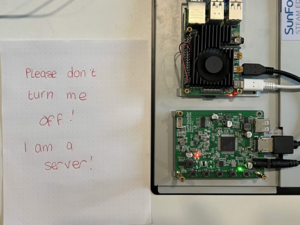
How we proceeded with generative AI
Our outset has been Stable Diffusion - a different visual culture than, say DALL-E.
A journey/mapping of, guided by Nicolas.
Mapping 'objects of interest/necessity'
... Objects, not as manifestations of an ideal (an imaginary of autonomy), but the other way around: in our investigation we have found these objects and we try to draw a map of what autonomy looks like, rather than what it is.
... That is the objects that create the imaginary
... Not what autonomy is, but what it looks like under given conditions.
Resulting in a workshop/exhibition/catalogue, September 2025 (final outcome)
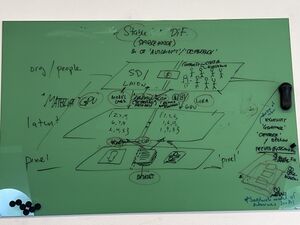
There are things that show
... ‘pixel space’: Images we create or images that are used to create and annotate data sets.
There are things that don't show
… A 'latent space' of models that generate outcomes
… Software and people/communities that use and build on the software, to – for instance – support their own visual culture.
… A level of organization of these people (for crowdsourcing p2p, using virtual tokens)
… A material level of dependencies on units (such as the GPU, minerals, 'dead labour')
AI Horde image generation with a communal infrastructure
Why?
- Monopoly and concentration of power in platform capitalism
- The user is the product
- Governance
- Epistemic closure
Platform economy

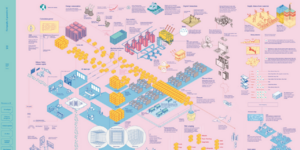
Software

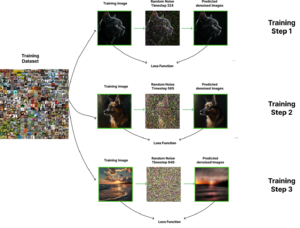


Decentralisation
CivitAI - a platform/repository
CivitAI is a highly popular platform/repository for distributing AI models and images. In our taxonomy, it's what we refer to as a space between the private and the commons. It's private in the sense that it's focused on individuals sharing their work (e.g., the creation of new models), and commons in the sense that most models can be reused and remixed. It's a repository whose primary purpose is to share resources.
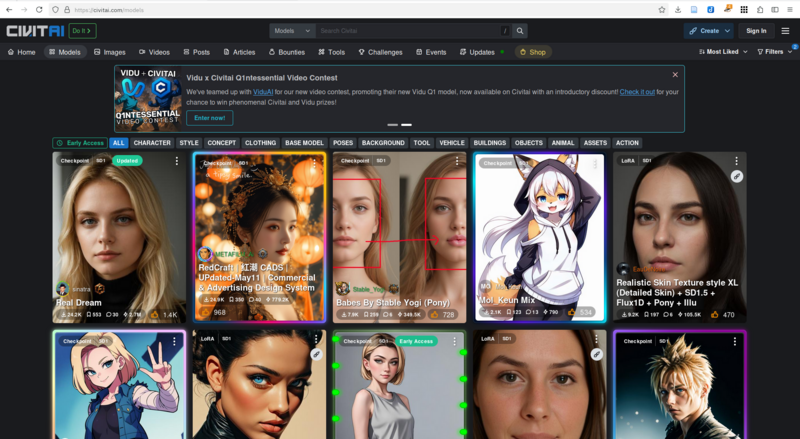
CivitAI has its own currency ("buzz"). It can be purchased or earned by being part of the community (posting, recommending, commenting, etc.). It can be used to leave tips or to order certain models.

It is largely a cultural hub, with its own economy, rules, and aesthetic preferences.
While many, and the most popular models, recreate canon's of beauty and heteronormative standards, civitAI can be read as a hyper-specialisation space beyond big tech. This is where the "amateur modeler" can share their work.
AI Horde - a network
AI Horde is a distributed computing cluster system. Using open source and crowdfunding, it allows users to borrow and lend other computers with graphics cards to use generative AI models.
The system works by creating a directory of "workers" who are part of this network and distributing calls among themselves. In this sense, it is partially decentralised.

As a worker, you can generate "kudos," the exchange currency with which you can also generate images of other workers (more kudos = better and faster models).
Artbot - an interface
There are many interfaces for this "decentralised" network of "workers" (since the AI horde software/network is accessible through APIs, access can take many forms)
One is a web-based interface: artbot
Not only is there a complex system behind this interface, like with most generative AI interfaces (computational models based on large, obscure databases), but there is also a somewhat invisible intersection between the technical, the cultural, and the artistic (computational, computer science, the amateur modeler, the visual artist, and the average user).
Artbot not a plug-and-play interface either. While it is a suitable version in which programming knowledge is not required (as in older versions), it is not a blank, tame interface (think of Apple or chatGPT)
If you want to use the GPU in the room, click (as per the image below), and search for the worker called "xpablov117"
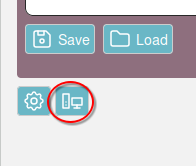
If you choose to use "our" worker, you will be limited to the following models (no LORAs, in_painting or image to image options):
- stable_diffusion
- Deliberate
- ICBINP - I Can't Believe It's Not Photography
- AbsoluteReality
(here is a list of all the models available in the network at this point: https://tinybots.net/artbot/info/models
About the NSFW issue within AI horde:
- https://www.patreon.com/posts/nsfw-question-72771484
- https://www.patreon.com/posts/blacklist-72890784
- https://dbzer0.com/blog/ai-powered-anti-csam-filter-for-stable-diffusion/
Configuring AI horde
(if we have time, we can talk/show the file configuration for AI horde)
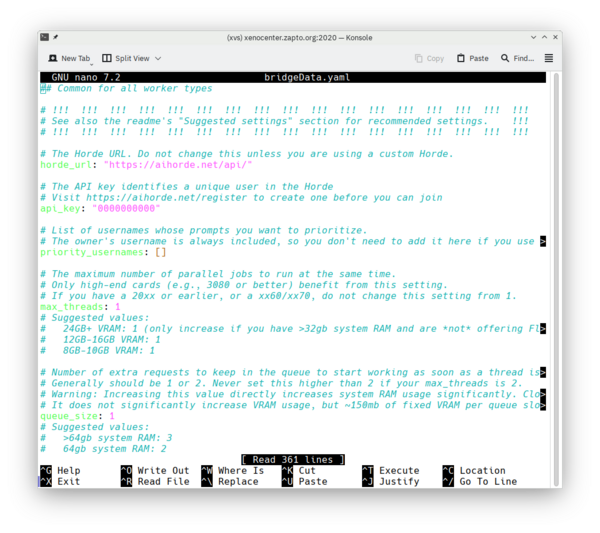
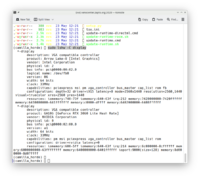

Dialogue
❧ What does it mean to make images in these ways?
❧ How does governance function in these projects?
❧ What is the relationship between the sharing ethos of these projects and their value generation?
❧ What forms do the economy, labor, and bodies take?
Resources
Startups funded 2013-2023:
Critical perspective:
AI and materiality
- Big data, and only getting bigger https://arstechnica.com/information-technology/2025/05/where-hyperscale-hardware-goes-to-retire-ars-visits-a-very-big-itad-site
Software
- DiffusionBee official website (MAC)
- Diffusion Bee GitHub, AGPL Free Software
- Draw things official website https://drawthings.ai/
- ComfyUI (all platforms), Git Hub, Source
- https://github.com/AUTOMATIC1111/stable-diffusion-webui, Diffusion WebUI aka Automatic 1111
